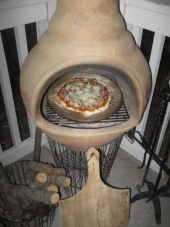







Ela La Salle wrote:
elisa rathje wrote:
good point! i have been a huge fan of chalk paint but recently made the galling discovery that like most paints (and i want to know exceptions and recipes…milk paint?) it contains polymer, as in, plastic, so the microplastic shedding is disappointingly real.
i do occasionally buy a canned tomato which is in a white can…
thanks jeanne!
I've found this information....
You could use lime milk for whitewashing fruit trees .
Such lime should be dissolved in water in the amount of 2 kg per 10 l of water. So that lime is not washed away too quickly from tree trunks during rain, it is worth adding substances that improve its adhesion (a little clay or cowberry to it)


Jeanne Wallace wrote:
Paint the cans white with a non-toxic paint like chalk paint. Its very sturdy outdoors and adheres well to metal with no prep (can even be used on outdoor furniture).
The white would reflect light and keep the tree trunk from overheating.